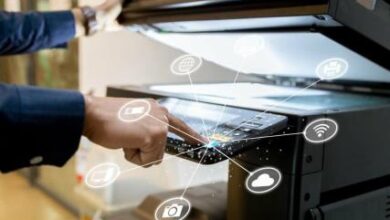
Unveiling the Power in Your Pocket: An Exploration of Mobile Technology
What do you understand by mobile technology. Mobile technology has undeniably woven itself into the fabric of our daily lives. From the moment we wake up to check the weather on our smartphones to using fitness trackers to monitor our workouts, these portable devices have become extensions of ourselves. But what exactly is mobile technology, and how has it evolved into the force it is today? what do you understand by mobile technology.
Demystifying Mobile Technology: Devices and Networks
At its core, mobile technology refers to the use of portable electronic devices for communication, computing, and information access. This broad category encompasses a range of gadgets, including:
- Smartphones: These ubiquitous devices are the undisputed champions of mobile technology. Combining the functionalities of a phone, camera, computer, and entertainment system, smartphones allow users to make calls, send texts, browse the internet, access apps, and much more.
- Tablets: Offering a larger screen than smartphones, tablets bridge the gap between phones and laptops. They are ideal for consuming media, reading ebooks, and playing games.
- Wearables: Smartwatches, fitness trackers, and other wearable devices are gaining immense popularity. These compact gadgets can track vital signs, monitor sleep patterns, and even make contactless payments.
- Laptops: While traditionally not considered “mobile” devices, the increasing portability and battery life of laptops allow for a more flexible work style.
These devices function through a combination of hardware and software. Hardware refers to the physical components of the device, such as the processor, memory, and screen. Software, on the other hand, encompasses the operating system and applications that power the device’s functionalities. what do you understand by mobile technology.
But mobile technology isn’t just about the devices themselves. It also relies heavily on robust wireless networks to connect these devices and facilitate communication and data transfer. Here’s a breakdown of the key network technologies:
- Cellular Networks: These networks, often referred to as “mobile data,” use radio waves to transmit data between devices and cell towers. Different generations of cellular networks (1G, 2G, 3G, 4G, and the upcoming 5G) offer varying speeds and capabilities.
- Wi-Fi: Wi-Fi networks provide internet access through wireless routers within a limited range. They are typically found in homes, offices, and public hotspots.
- Bluetooth: This short-range wireless technology allows for data transfer between devices like smartphones, headphones, and speakers.
A Historical Journey: The Evolution of Mobile Technology
The story of mobile technology is a fascinating tale of continuous innovation. Here are some key milestones that shaped the landscape:
- The Early Days (1940s–1970s): The concept of mobile communication dates back to the 1940s with the invention of car radios and walkie-talkies. The first commercial mobile phones emerged in the 1970s, but they were bulky, expensive, and had limited range.
- The Rise of the Cell Phone (1980s–1990s): The 1980s saw the development of smaller and more affordable cell phones, making them more accessible to the general public. The 1990s witnessed the introduction of SMS text messaging, which revolutionized mobile communication.
- The Smartphone Era (2000s–Present): The arrival of the iPhone in 2007 marked a paradigm shift. Smartphones with touchscreen interfaces, powerful processors, and app stores opened up a world of possibilities, forever changing the way we interact with technology.
The evolution of mobile technology has been driven by advancements in miniaturization, processing power, battery life, and network infrastructure. Today, mobile devices are no longer just communication tools; they are powerful mini-computers that cater to our diverse needs.
The Impact of Mobile Technology: A Double-Edged Sword
Mobile technology has undeniably had a profound impact on our lives, transforming how we:
- Communicate: We can now connect with anyone instantly, regardless of location, through calls, texts, video chats, and social media platforms.
- Access Information: The internet is at our fingertips, allowing us to research any topic, access news updates, and stay informed.
- Work and Learn: Mobile devices have facilitated remote work and flexible learning opportunities. We can access work documents, attend online meetings, and take courses from anywhere.
- Shop and Bank: Mobile technology has revolutionized e-commerce, allowing for secure online transactions and mobile banking services.
- Navigate and Explore: GPS navigation apps have made getting around easier than ever. We can explore new places, find directions, and receive real-time traffic updates.
- Entertain Ourselves: Smartphones and tablets are entertainment powerhouses, offering access to games, streaming services, music, and videos.




